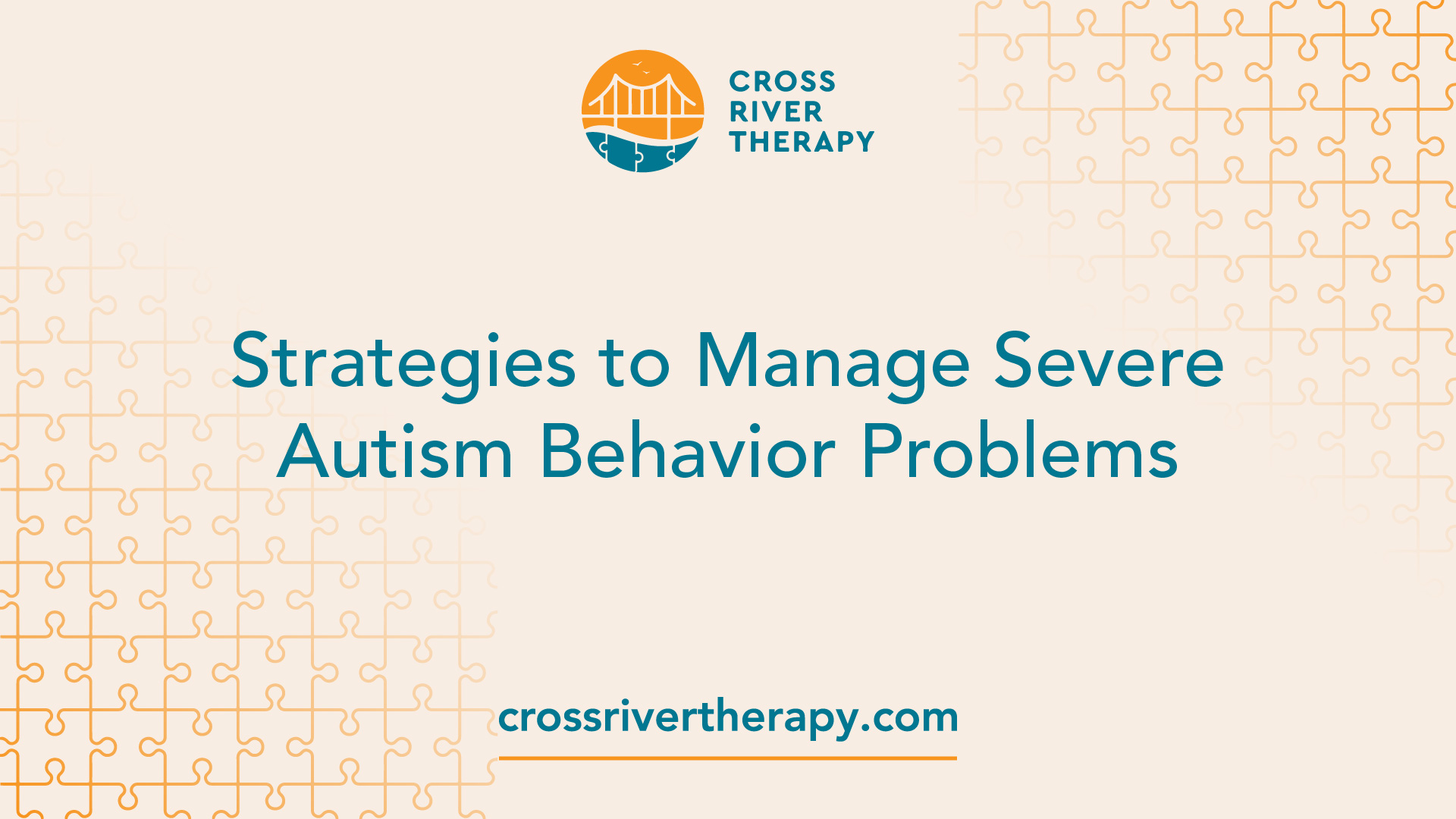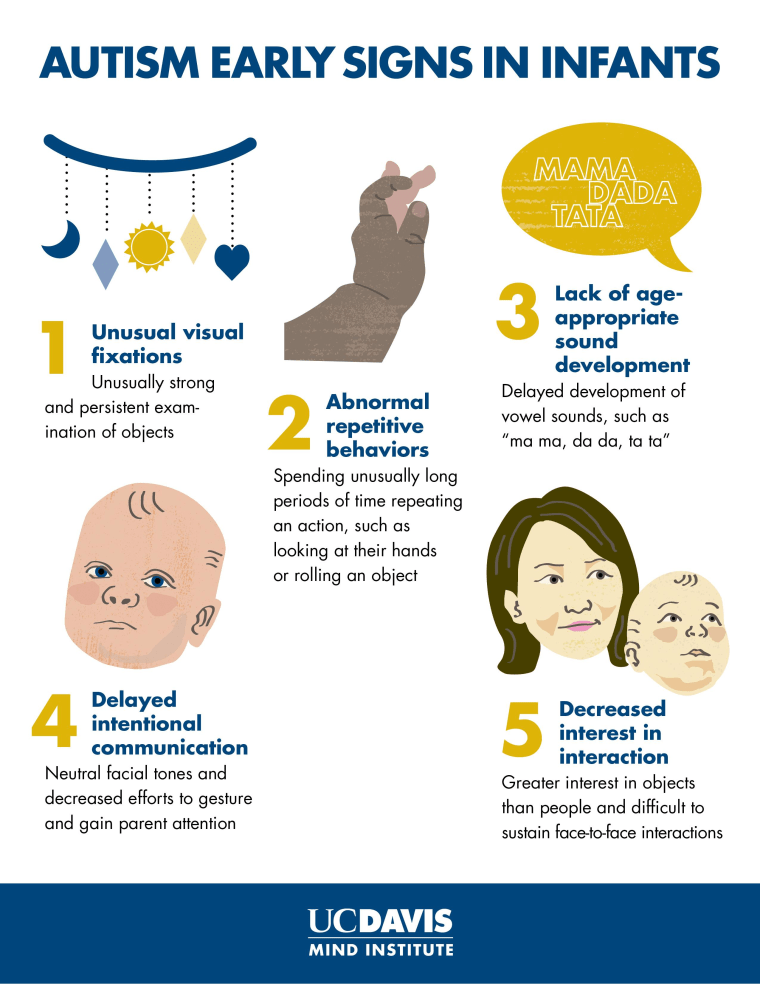Why routines matter help children with autism—according to an Autism Therapist’s advice
Why routines matter help children with autism—according to an Autism Therapist’s advice
Blog Article
Understanding the Effect of Behavioral Autism on Day-to-day Live and Social Interactions
You might not recognize just how deeply behavioral autism impacts day-to-day live and social communications. Individuals on the spectrum frequently browse a world full of communication obstacles and sensory overload. These obstacles can cause frustration and seclusion, affecting their relationships and total well-being. Comprehending these subtleties is vital for promoting helpful environments. What methods can we implement to produce even more comprehensive spaces and purposeful connections? The solutions might amaze you.
Specifying Behavioral Autism and Its Features
Behavioral autism, usually described as autism range problem (ASD), encompasses a series of conditions identified by difficulties in social communication, interaction, and recurring habits. You could discover that individuals with ASD frequently have a hard time to interpret social signs, which can result in misconceptions in discussions. They might find it hard to develop eye call or take part in tiny talk, making social situations feel frustrating.
Interaction problems can materialize in various means, from delayed speech advancement to a preference for utilizing fewer words. Repetitive actions, such as hand-flapping or rocking, can offer as coping systems to take care of stress or sensory overload. These qualities can exceptionally impact every day life, making it essential for you to comprehend and support those with ASD. By identifying these characteristics, you can cultivate an atmosphere that promotes approval and encourages effective communication, aiding individuals with autism grow in their daily interactions.
The Range of Autism: Recognizing Irregularity in Behavior
Autism spectrum condition (ASD) isn't a one-size-fits-all diagnosis; it varies commonly amongst individuals. You could observe that some individuals with ASD display mild signs, while others might deal with extra significant difficulties. This variability can materialize in habits, passions, and sensory level of sensitivities. You may experience people who are extremely verbal and engage easily in discussions, while others may prefer singular activities or communicate non-verbally.
Moreover, the way people with ASD react to sensory input can vary greatly; some could be overwhelmed by bright lights or loud sounds, whereas others grow in boosting atmospheres. The range also includes distinctions in social interactions; some individuals may have a hard time to analyze social hints, while others browse social setups with relative ease. Recognizing this variability is essential, as it aids you value everyone's distinct experience and tailor assistance to their details requirements, promoting a more comprehensive atmosphere for everyone.
Communication Challenges Dealt With by People With Autism
When you communicate with individuals on the autism range, you might discover their unique communication challenges. They frequently deal with troubles with both verbal and nonverbal signs, which can affect their social interactions. Comprehending these obstacles is essential for fostering better links and support.

Verbal Interaction Difficulties
Several people on the autism range experience spoken communication troubles that can considerably affect their daily interactions. Your pace, tone, or quantity could not align with social assumptions, causing others to misunderstand your intents. Identifying these difficulties can aid you and your assistance network establish methods to boost interaction and foster much better links with others in your everyday life.
Nonverbal Communication Obstacles
Verbal interaction isn't the only difficulty individuals on the autism range face; nonverbal interaction obstacles can be equally as considerable. You could discover it difficult to translate body movement, faces, and eye call, which are necessary for effective communication. These challenges can lead to misconceptions or misconceptions of social signs, making communications really feel overwhelming or complex. You may battle to reveal your own emotions through nonverbal means, leaving others unsure of your purposes or feelings. This separate can produce feelings of seclusion and aggravation. Recognizing these barriers is essential for fostering understanding and compassion in your interactions. By dealing with nonverbal interaction, you can locate strategies to boost your social experiences and improve your overall top quality of life.
Social Communication Effects
Social communications can frequently really feel frustrating due to the special interaction obstacles dealt with by individuals with autism. You could deal with interpreting social cues, making it tough to recognize mockery or body language. This can bring about misunderstandings or unpleasant minutes in discussions. Additionally, starting and maintaining conversations might really feel tough, causing stress and anxiety in social situations. You might like structured settings, making spontaneous interactions awkward. It's additionally typical to experience trouble in taking part in tiny talk, which can impede forming new friendships. Recognizing these obstacles can assist you discover techniques to improve interaction, such as practicing social skills in secure settings or making use of visual help - Autism Therapist. Understanding your needs enables you to browse social communications with higher self-confidence and simplicity.
Social Interaction and Relationship Building in Autism
While building relationships can be challenging for individuals with autism, comprehending their special perspectives and interaction styles can promote meaningful connections. You might observe that several individuals on the range prefer direct communication and might have problem with social signs or tiny talk. By being uncomplicated in your interactions, you can aid create an environment where they feel comfortable.
Involving in shared interests can additionally serve as a bridge to much deeper connections. Whether it's a hobby, a preferred show, or a common enthusiasm, these usual threads can open up doors to relationship.
Life Regimen: Browsing Challenges and Approaches
Maneuvering day-to-day life regimens can be especially testing for individuals with autism, specifically when unforeseen adjustments occur. To navigate these challenges, take into consideration implementing visual schedules or checklists.
Establishing a routine that consists of sensory breaks can additionally be advantageous. This aids create an understanding setting.
Finally, method mindfulness methods to manage stress and anxiety. Straightforward breathing exercises or grounding strategies can make a considerable difference. By incorporating these strategies, you can enhance your daily routine and lessen disruptions, making life feel much more manageable.
Staminas and Capabilities of Individuals on the Autism Range
Understanding daily life routines is simply one aspect of the autism experience. Numerous individuals on the autism range possess exceptional staminas and abilities that establish them apart.
Furthermore, your memory abilities commonly beam, especially in areas of interest. Autism Behavioral Therapy. This flair for keeping details can make you an important source in areas like art, innovation, or scientific research. You might additionally exhibit strong visual reasoning, enabling you to picture complicated ideas and resolve problems artistically
In addition, your unique viewpoint on the world can foster compassion and understanding in others, enriching social interactions. Embracing these strengths not only enhances your self-confidence yet also helps others value the varied abilities you give the table.
Producing Inclusive Environments for People With Autism
Creating comprehensive environments for individuals with autism starts with developing sensory-friendly rooms that satisfy their unique needs. You can additionally cultivate possibilities for social interaction, aiding to build links and friendships. By making these adjustments, you'll add to a much more inviting atmosphere for everyone.
Designing Sensory-Friendly Spaces
While developing sensory-friendly spaces, it's essential to review the special demands of individuals with autism. Beginning by selecting soothing shades and soft illumination to produce a soothing environment. When overwhelmed, integrate peaceful areas where individuals can pull away and reenergize. You'll wish to reduce other loud sounds and disturbances, making use of soundproof materials or white sound makers to help maintain harmony. Think about tactile components like soft textiles or fidget-friendly things that can offer convenience. Identify that rooms are versatile, enabling easy rearrangement to fit different tasks. Consist of visual schedules or clear signage to assist people navigate the area with confidence. By attentively incorporating these elements, you can create an inviting environment that supports sensory demands and advertises overall health.
Promoting Social Interaction Opportunities
Creating sensory-friendly areas not just addresses specific comfort yet additionally establishes the phase for purposeful social communications amongst individuals with autism. To advertise these interactions, develop inclusive atmospheres that invite engagement. Organize structured activities, like art classes or team video games, that encourage partnership without overwhelming sensory input. Use aesthetic aids and clear communication to assist everyone engage conveniently. Motivate peer mentoring, combining individuals with autism with helpful peers who can guide them with social situations. Furthermore, take into consideration holding routine area occasions that commemorate neurodiversity, cultivating approval and understanding amongst all participants. directory By applying these approaches, you can enhance social chances, helping people with autism construct relationships and strengthen their social abilities in a secure, welcoming atmosphere.

Regularly Asked Questions
How Can Pals Support Someone With Behavioral Autism?
You can sustain a good friend with behavior autism by holding your horses, paying attention actively, and appreciating their borders. Take part in activities they delight in, communicate freely, and create a comfortable atmosphere where they really feel valued and understood.
What Resources Are Available for Moms And Dads of Children With Autism?
You can explore different sources for parents of children with autism, including assistance teams, academic websites, and local social work. Getting in touch with various other moms and dads can additionally give important insights and shared experiences to aid browse challenges.
Can Behavioral Autism Modification Over Time?

Yes, behavior autism can transform in time. You might notice changes in communication, social abilities, and behavior as your child expands. Early intervention and assistance commonly play crucial duties in these developmental changes.
Exactly How Do Sensory Sensitivities Impact Day-to-day Live?
Sensory sensitivities can make daily experiences overwhelming. You could have problem with bright lights or loud noises, causing tension or evasion. Locating settings that suit your needs can significantly improve your comfort and total everyday life.
What Prevail Misconceptions Concerning Behavioral Autism?
You might believe behavioral autism only impacts communication abilities, however it's more complex. Several presume individuals do not have compassion or intelligence, which isn't true. Understanding these false impressions helps foster approval and assistance for those on the spectrum.
Behavior autism, frequently referred to as autism spectrum disorder (ASD), includes a variety of conditions defined by challenges in social communication, interaction, and recurring habits.Social interactions can often feel overwhelming due to the one-of-a-kind communication challenges encountered by people with autism.Creating sensory-friendly areas not just addresses individual convenience however additionally sets the stage for purposeful social communications among individuals with autism. my explanation Urge peer mentoring, pairing individuals with autism with supportive peers that can guide them with social circumstances. By carrying out these approaches, you can boost social opportunities, helping individuals with autism develop relationships and strengthen their social abilities in a secure, inviting environment.
Report this page